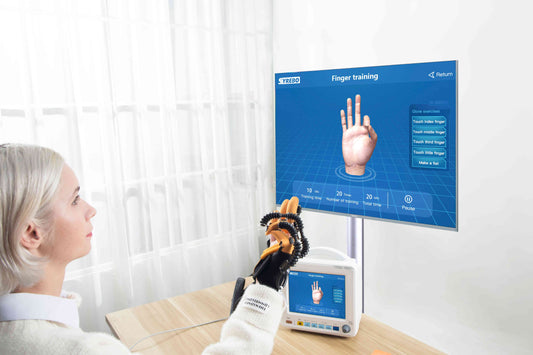The glove was purchased for my mother that had a massive stroke. After use of the glove, her hand is no longer ceasing up. It's working and doing the job as promised. Thank you!
It’s a very high quality product and worth the price paid to rehabilitate my teenage daughter’s right hand after she was injured and had a stroke from a car accident.
SYREBO Stroke Hand Finger Rehabiliation Robot Gloves for Stroke Patients E10 basic model
My husband has gotten worse and is in hospital. So we want to send the item back.
How shall we do?
My daughter had an anoxic brain injury that caused her hand to be clenched and unable to open, it has remained that way for a very long time. I made a plea to Syrebo and asked them to donate a robotic rehabilitation glove to my daughter. They immediately contacted me and wanted to help us. From the very first time the glove was placed on my daughter's hand she was relaxed and out of pain. Every time her fingers were opened in therapy, she was in excruciating pain. The robotic glove is allowing her to open and close her fingers with absolutely no pain. This item is a miracle, and I am very blessed that the angels at Syrebo helped us. I would recommend this item to everyone that has hand problems. I can testify from personal experience that it makes more of a difference than you could ever imagine.



































